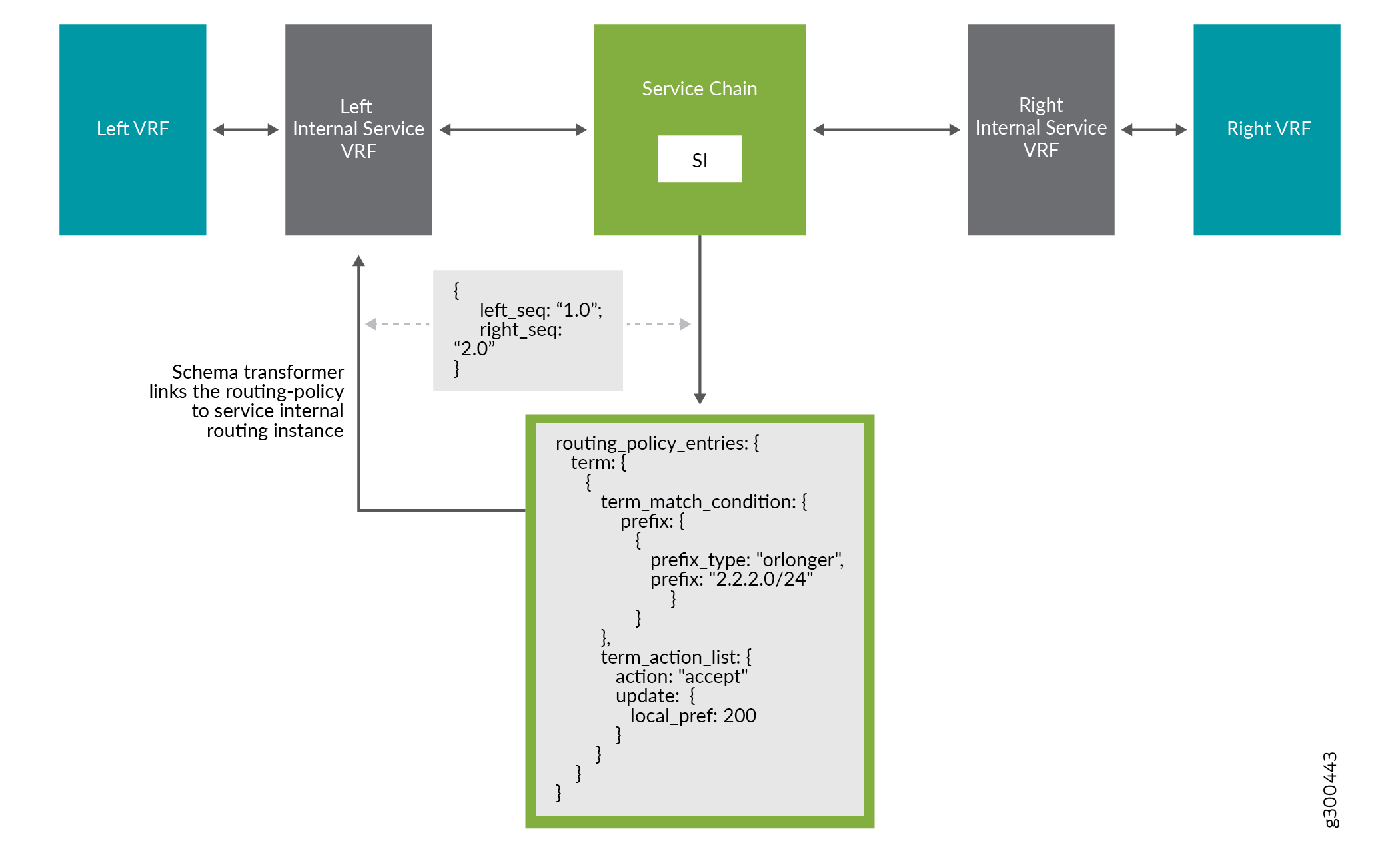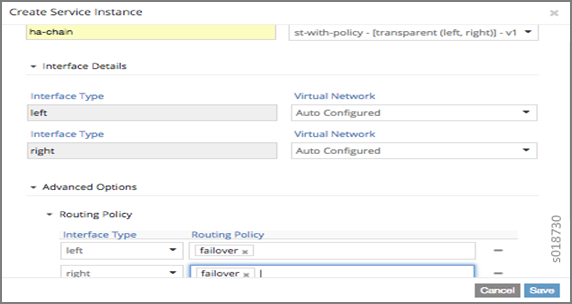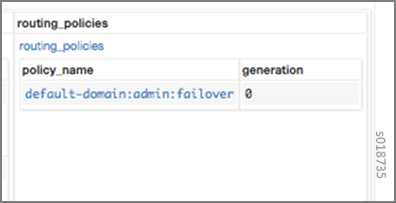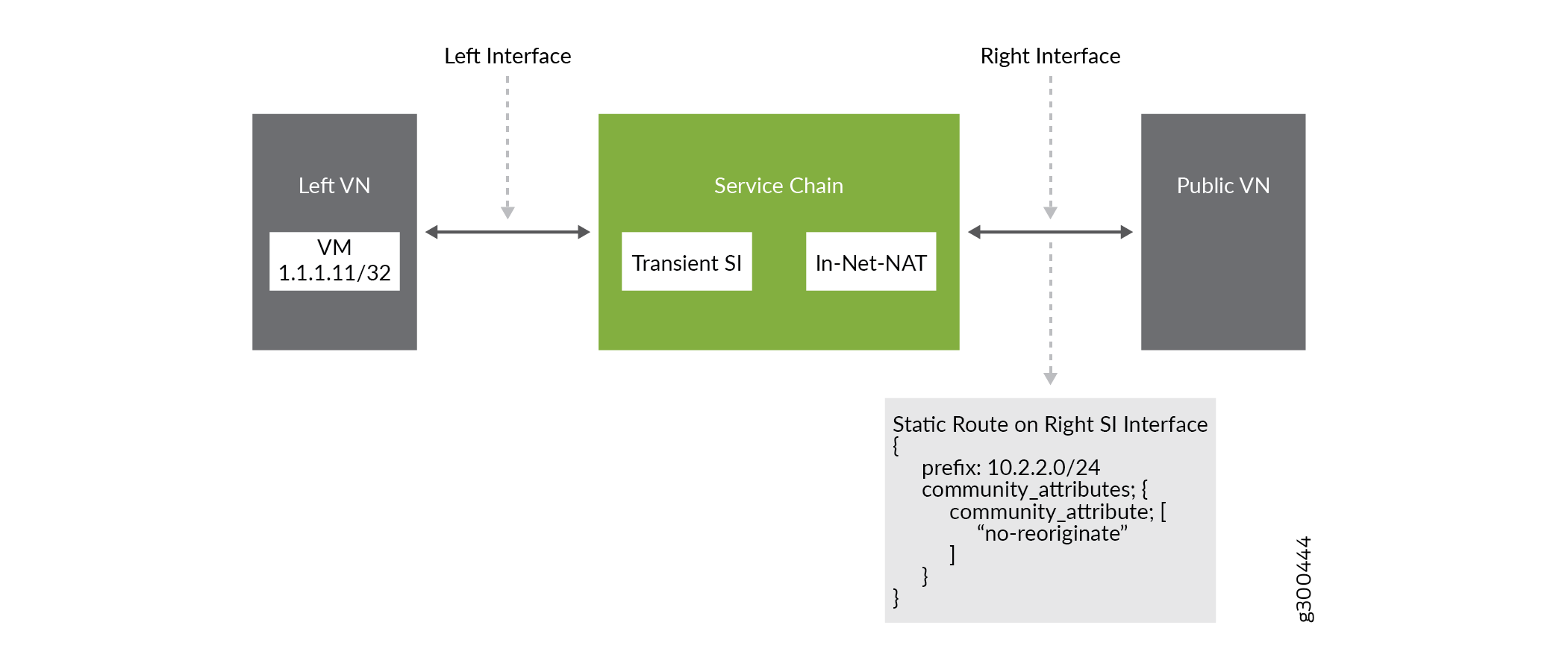ON THIS PAGE
Routing Policy
Starting with Contrail Networking Release 1910, virtual network routing policies are automatically applied to secondary routes. See Applying Routing Policies to Secondary Routes.
Contrail Networking uses routing policy infrastructure to manipulate the route and path attribute dynamically and supports attaching the import routing policy on the service instances.
The routing policy contains list terms. A term can be a terminal rule, meaning that upon a match on the specified term, no further terms are evaluated and the route is dropped or accepted, based on the action in that term.
If the term is not a terminal rule, subsequent terms are evaluated for the given route.
The list terms are structured as in the following example.
Policy {
Term-1
Term-2
}
The matches and actions of the policy term lists operate similarly to the Junos language match and actions operations. A visual representation is the following.

Each term is represented as in the following:
from {
match-condition-1
match-condition-2
..
..
}
then {
action
update-action-1
update-action-2
..
..
}
The term should not contain an any match condition, for example, an empty from should not be present.
If an any match condition is present,
all routes are considered as matching the term.
However, the then condition can be
empty or the action can be unspecified.
Applying Routing Policy
The routing policy evaluation has the following key points:
If the term of a routing policy consists of multiple match conditions, a route must satisfy all match conditions to apply the action specified in the term.
If a term in the policy does not specify a match condition, all routes are evaluated against the match.
If a match occurs but the policy does not specify an accept, reject, or next term action, one of the following occurs:
The next term, if present, is evaluated.
If no other terms are present, the next policy is evaluated.
If no other policies are present, the route is accepted. The default routing policy action is “accept”.
If a match does not occur with a term in a policy, and subsequent terms in the same policy exist, the next term is evaluated.
If a match does not occur with any terms in a policy, and subsequent policies exist, the next policy is evaluated.
If a match does not occur by the end of a policy or all policies, the route is accepted.
A routing policy can consist of multiple terms. Each term consists of match conditions and actions to apply to matching routes.
Each route is evaluated against the policy as follows:
The route is evaluated against the first term. If it matches, the specified action is taken. If the action is to accept or reject the route, that action is taken and the evaluation of the route ends. If the next term action is specified or if no action is specified, or if the route does not match, the evaluation continues as described above to subsequent terms.
Upon hitting the last non-terminal term of the given routing policy, the route is evaluated against the next policy, if present, in the same manner as described in step 1.
- Match Condition: From
- Routing Policy Action and Update Action
- Applying Routing Policies to Secondary Routes
Match Condition: From
The match condition from contains
a list of match conditions to be satisfied for applying the action
specified in the term. It is possible that the term doesn’t
have any match condition. This indicates that all routes match this
term and action is applied according to the action specified in the
term.
The following table describes the match conditions supported by Contrail Networking.
Match Condition |
User Input |
Description |
|---|---|---|
Prefix |
List of prefixes to match |
Each prefix in the list is represented as prefix and match type, where the prefix match type can be:
Example: 1.1.0.0/16 A route matches this condition if its prefix matches any of the prefixes in the list. |
Community |
Community string to match |
Represented as either a well-known community string with |
Protocol |
Array of path source or path protocol to match |
BGP | XMPP | StaticRoute | ServiceChain | Aggregate. A path is considered as matching this condition if the path protocol is one of protocols in the list. |
Routing Policy Action and Update Action
The policy action contains two parts, action and update action.
The following table describes action as supported by Contrail Networking.
Action |
Terminal? |
Description |
|---|---|---|
Reject |
Yes |
Reject the route that matches this term. No more terms are evaluated after hitting this term. |
Accept |
Yes |
Accept the route that matches this term. No more terms are evaluated after hitting this term. The route is updated using the update specified in the policy action. |
Next Term |
No |
This is the default action taken upon matching the policy term. The route is updated according to the update specified in the policy action. Next terms present in the routing policy are processed on the route. If there are no more terms in the policy, the next routing policy is processed, if present. |
The update action section specifies the route modification to be performed on the matching route.
The following table describes update action as supported by Contrail Networking.
Update Action |
User Input |
Description |
|---|---|---|
Community |
List of community |
As part of the policy update, the following actions can be taken for community:
|
MED |
Update the MED of the BgpPath |
Unsigned integer representing the MED |
local-pref |
Update the local-pref of the BgpPath |
Unsigned integer representing local-pref |
Applying Routing Policies to Secondary Routes
A virtual network routing policy is automatically applied to secondary routes. The ability to apply routing policies to secondary routes is especially useful as a mechanism to modify routes imported from MP-BGP, including routes that are imported from the MPLS network.
Routing policies that are attached to service instances are applied to primary routes only. These routing policies are not applied to secondary routes.
Routing Policy Configuration
Routing policy is configured on the service instance. Multiple routing policies can be attached to a single service instance interface.
When the policy is applied on the left interface, the policy is evaluated for all the routes that are reoriginated in the left VN for routes belonging to the right VN. Similarly, the routing policy attached to the right interface influences the route reorigination in the right VN, for routes belonging to the left VN.
The following figure illustrates a routing policy configuration.

The policy sequence number specified in the routing policy link data determines the order in which the routing policy is evaluated. The routing policy link data on the service instance also specifies whether the policy needs to be applied to the left service interface, to the right service interface, or to both interfaces.
It is possible to attach the same routing policy to both the left and right interfaces for a service instance, in a different order of policy evaluation. Consequently, the routing policy link data contains the sequence number for policy evaluation separately for the left and right interfaces.
The schema transformer links the routing policy object to the internal routing instance created for the service instance. The transformer also copies the routing policy link data to ensure the same policy order.
Configuring and Troubleshooting Routing Policy
This section shows how to create a routing policy for service chains and how to validate the policy.
Create Routing Policy
First, create the routing policy, Configure > Networking > Routing > Create >Routing Policy. See the following example.

The Contrail Web UI and REST APIs enable you to configure a BGP routing policy and then assign it to a virtual network, but the routing policy will not be applied if the virtual network is attached to an L3VPN.
Configure Service Instance
Create a service instance and attach the routing policy to both the left and right interfaces. The order of the policy is calculated by the UI, based on the order of the policy specified in the list.

Configure the Network Policy for the Service Chain
At Edit Policy, create a policy for the service chain, see the following example.

Using a VNC Script to Create Routing Policy
The following example shows use of a VNC API script to create a routing policy.
from vnc_api.vnc_api import *
vnc_lib = VncApi("admin", "<password>", "admin")
project=vnc_lib.project_read(fq_name=["default-domain", "admin"])
routing_policy=RoutingPolicy(name="vnc_3", parent_obj=project)
policy_term=PolicyTermType()
policy_statement=PolicyStatementType()
match_condition=TermMatchConditionType(protocol=["bgp"], community="22:33")
prefix_match=PrefixMatchType(prefix="1.1.1.0/24", prefix_type="orlonger")
match_condition.set_prefix([prefix_match])
term_action=TermActionListType(action="accept")
action_update=ActionUpdateType(local_pref=101, med=10)
add_community=ActionCommunityType()
comm_list=CommunityListType(["11:22"])
add_community.set_add(comm_list)
action_update.set_community(add_community)
term_action.set_update(action_update)
policy_term.set_term_action_list(term_action)
policy_term.set_term_match_condition(match_condition)
policy_statement.add_term(policy_term)
routing_policy.set_routing_policy_entries(policy_statement)
vnc_lib.routing_policy_create(routing_policy)
Verify Routing Policy in API Server
You can verify the service instance references and the routing instance references for the routing policy by looking in the API server configuration database. See the following example.

Verify Routing Policy in the Control Node
You can verify the routing policy in the control node.
Point your browser to:
http://<control-node>:8083/Snh_ShowRoutingPolicyReq?search_string=failover
See the following example.

Verify Routing Policy Configuration in the Control Node
You can verify the routing policy configuration in the control node.
Point your browser to:
http://<control-node>:8083/Snh_ShowBgpRoutingPolicyConfigReq?search_string=failover
See the following example.

Verify Routing Policy Configuration on the Routing Instance
You can verify the routing policy configuration on the internal routing instance.
Point your browser to:
http://<control-node>:8083/Snh_ShowBgpInstanceConfigReq?search_string=<name-of-internal-vrf>
See the following example.

You can also verify the routing policy on the routing instance operational object.
Point your browser to:
http://<control-node>:8083/Snh_ShowRoutingInstanceReq?x=<name-of-internal-vrf>
See the following example.

Control for Route Reorigination
The ability to prevent reorigination of interface static routes is typically required when routes are configured on an interface that belongs to a service VM.
As an example, the following image shows a service chain that
has multiple service instances, with an in-net-nat service instance as the last service VM, also with the right VN
as the public VN.
The last service instance performs NAT by using a NAT pool. The right interface of the service VM must be configured with an interface static route for the NAT pool so that the destination in the right VN knows how to reach addresses in the NAT pool. However, the NAT pool prefix should not be reoriginated into the left VN.
To prevent route reorigination, the interface static route is
tagged with a well-known BGP community called no-reoriginate.
When the control node is reoriginating the route, it skips the routes that are tagged with the BGP community.

Configuring and Troubleshooting Reorigination Control
The community attribute on the static routes for the interface static route of the service instance is specified during creation of the service instance. See the following example.

Use the following example to verify that the service instance configuration object in the API server has the correct community set for the static route. See the following example.

